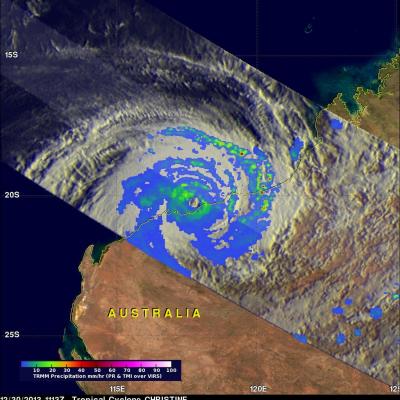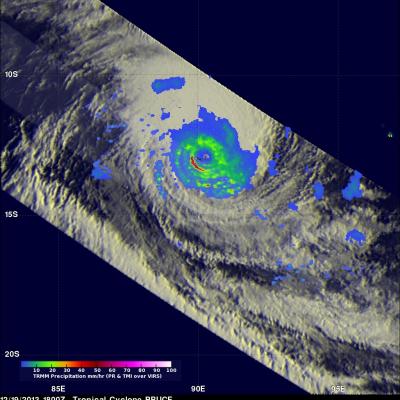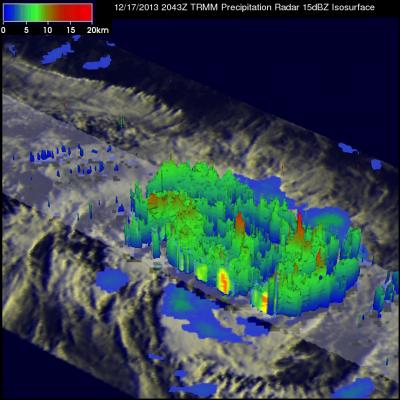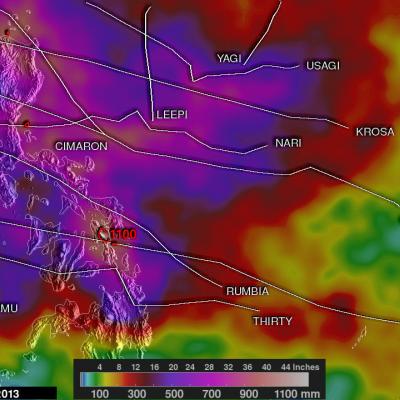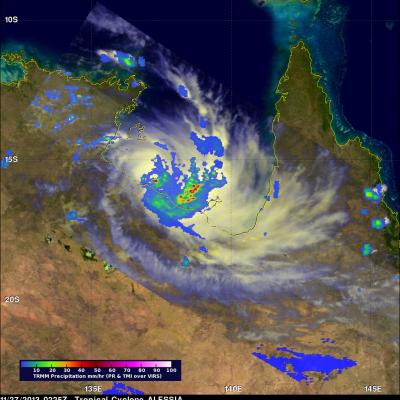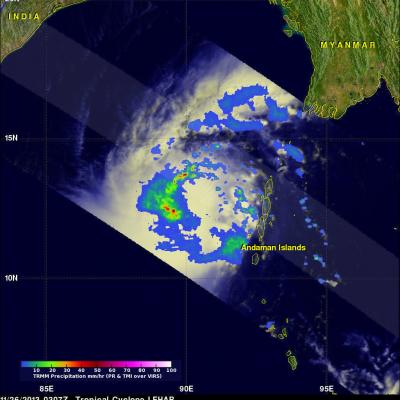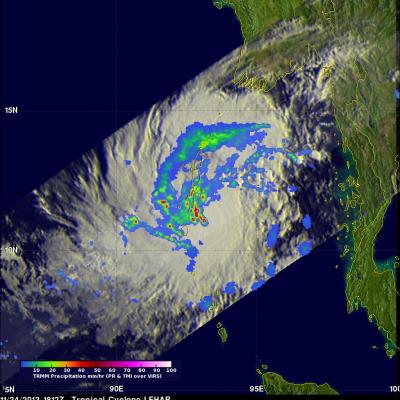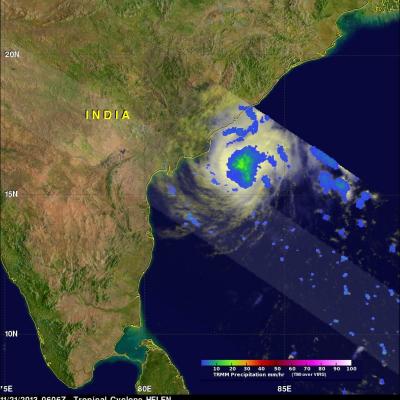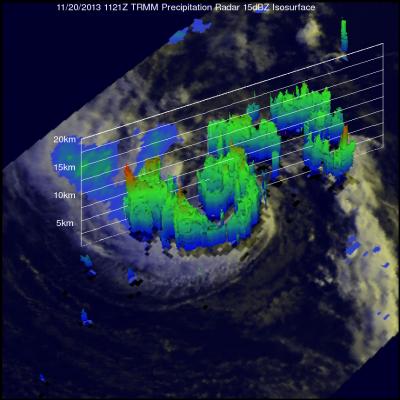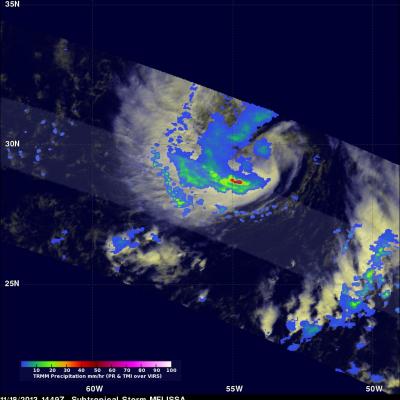Tropical Cyclone Christine
Tropical cyclone Christine was in the South Indian Ocean close to the northwestern coast of Australia when the TRMM satellite passed over on December 30, 2013 at 1113 UTC. TRMM's Microwave Imager (TMI) and precipitation Radar (PR) instruments revealed that Christine had a well defined eye. TRMM PR found that the most intense rain was falling at a rate of over 70mm/hr (~2.8 inches) in intense bands well to the east of Christine's eye. TRMM's Microwave Imager (TMI) instrument provided good coverage of Christine's eye while TRMM's Precipitation Radar (PR) had a good look at Christine's


